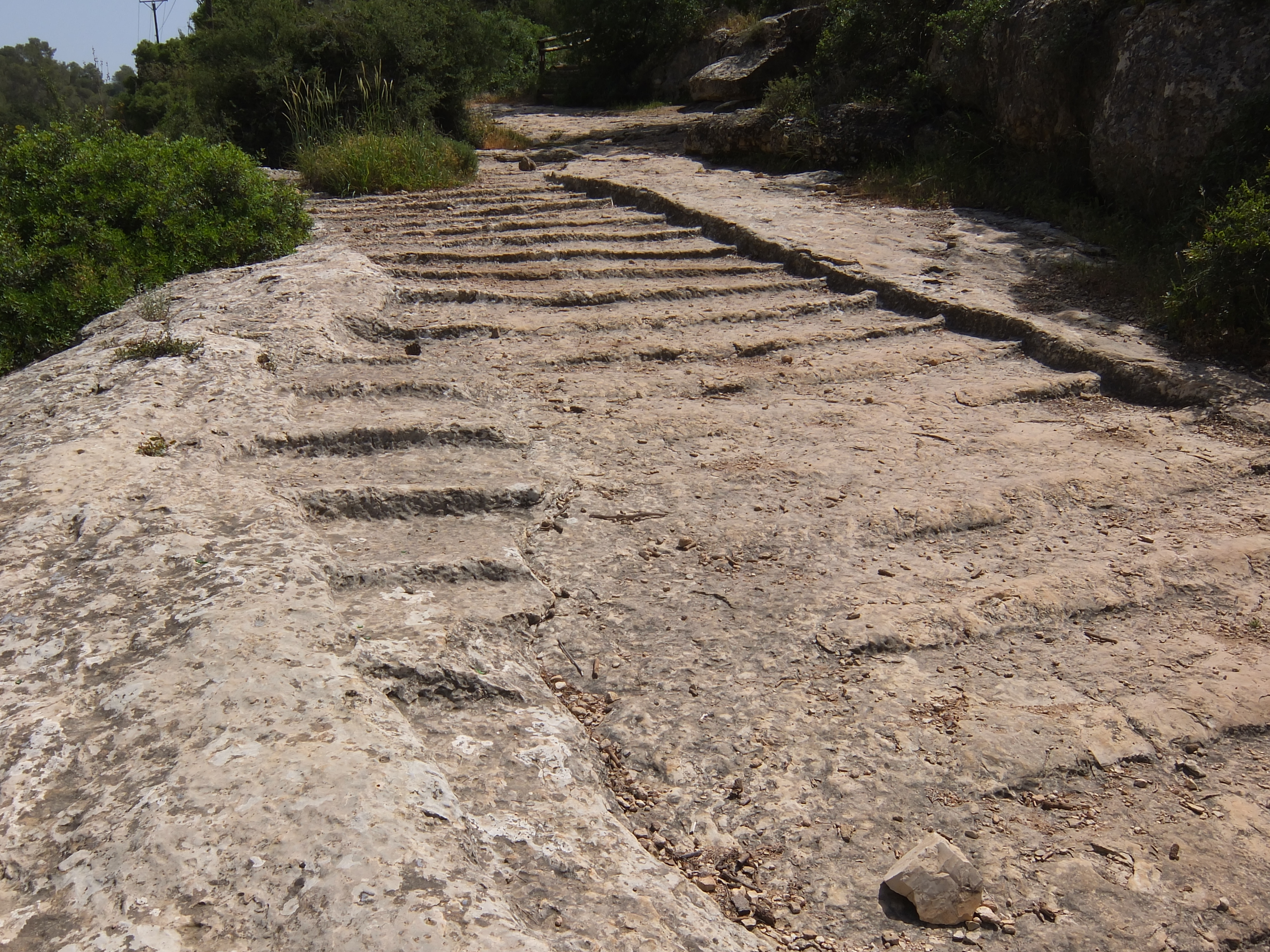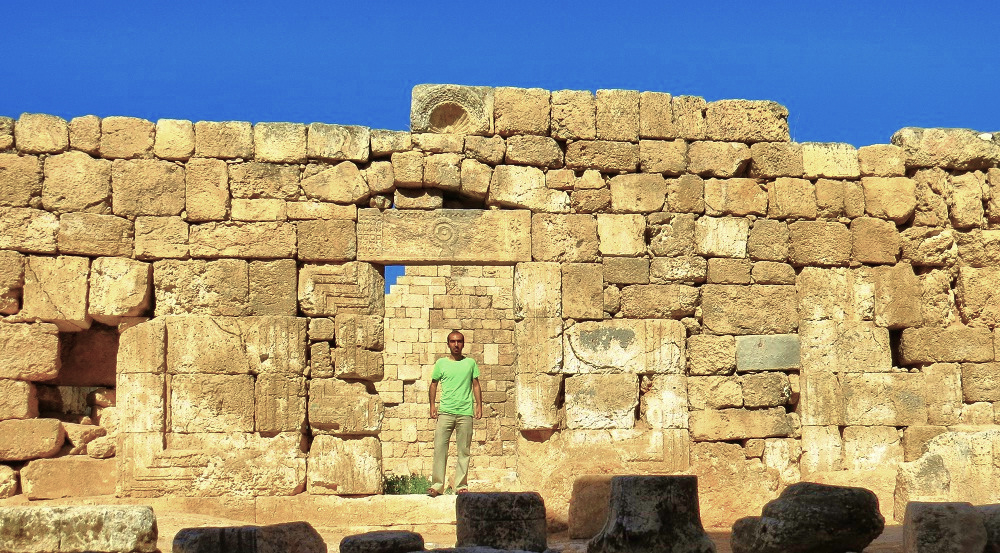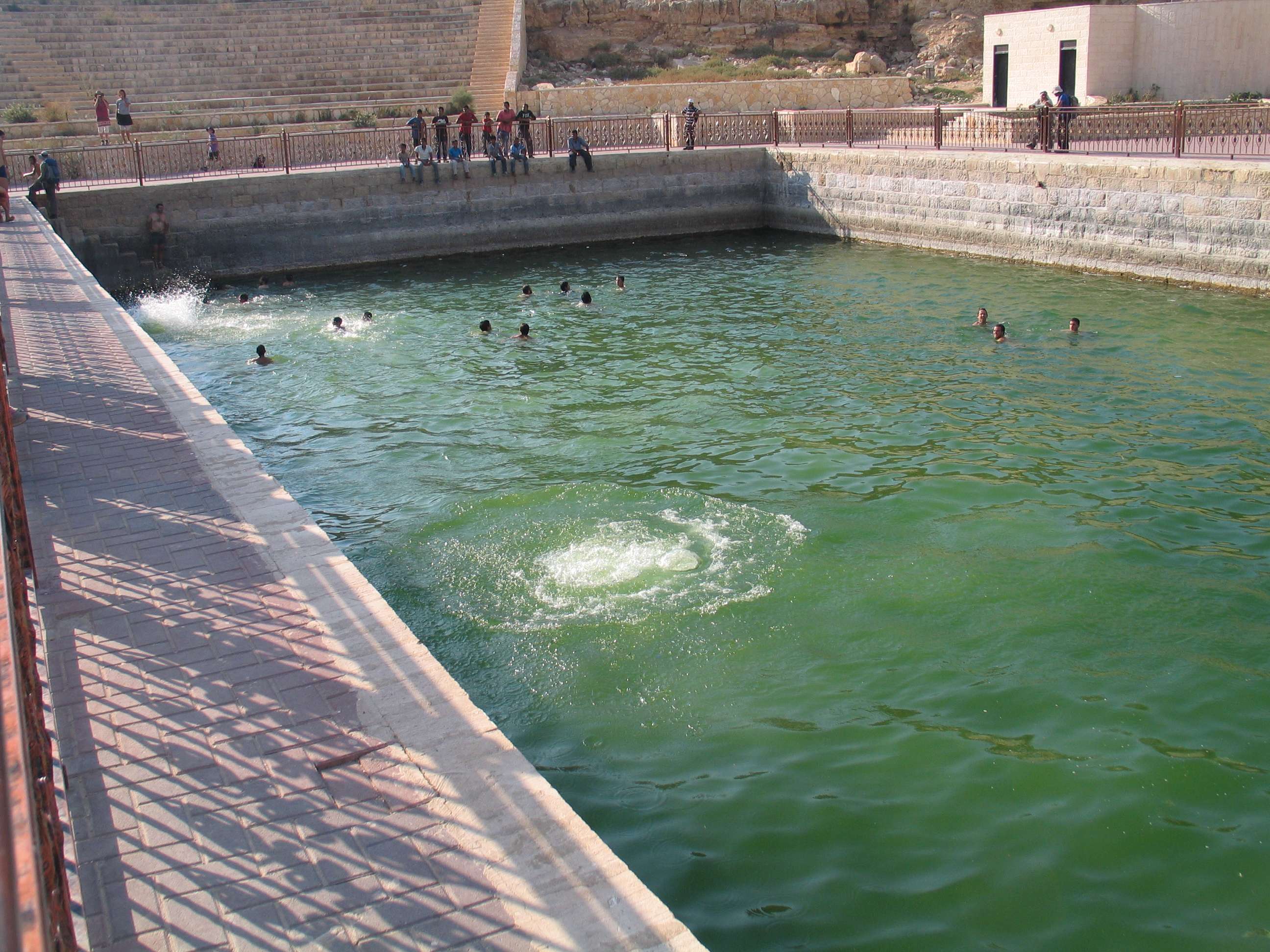|
Daroma
Daroma (Aramaic) or Darom (Hebrew language, Hebrew), both meaning 'South', was the name of the southern Hebron Hills in the History of Israel#Late Roman and Byzantine periods, Late Roman and Byzantine periods. The term is used in Eusebius's Onomasticon (Eusebius), ''Onomasticon'' (4th century) and in rabbinic literature. By the late tenth century, the Arab geographer al-Muqaddasi ('the Jerusalemite') was still referring to part of the region of Bayt Jibrin, Beth Guvrin by this name. In late antiquity, the term "Daroma" referred to the region extending from Ein Gedi, near the Dead Sea, to Eleutheropolis (Beth Govrin), a prominent city of the time. Its northern boundary was marked by Hebron and Mamre. For Eusebius, it is the southern part of the territory of Eleutheropolis. Eusebius also mentioned several large Jewish villages in Daroma. The region's Jewish inhabitants were particularly devoted to Hebrew. History Late Roman and Byzantine periods Geographical outline In late antiquit ... [...More Info...] [...Related Items...] OR: [Wikipedia] [Google] [Baidu] |
Horvat Maon (Hebron Hills)
Horvat Maon/Horvat Ma'on,130] Vlada Nikolsky (07/07/2010)"Horbat Ma‘on: Final Report" In ''HA-ESI'' Volume 122 (2010). Accessed 8 Feb 2024. Arabic: Khirbet Ma'in or Tell Máîn (PEF Survey of Palestine, SWP map No. 25), is an archaeological site in the Hebron Hills, West Bank, rising above sea level, where the remains of the ancient town of Ma'on () have been excavated. The town, now a ruin, is mentioned in the Book of Joshua () and the Books of Samuel (). It still had a Jewish population during the Roman and Byzantine periods, and a Ancient synagogues in Palestine , synagogue was discovered there. The site is located about southeast of Yatta, Hebron, Yatta. Etymology The Hebrew name is variously spelled as Horvat Ma'on, Horvat Maon, or Hurbat Ma'on. Tel Ma'on is sometimes also used. The Hebrew word ''ma'on'' means 'dwelling', 'habitation'. Horvat, horbat, hurbat, hurvat are transliteration variants of the Hebrew word for 'ruins' and direct equivalents of the Arabic khirbe ... [...More Info...] [...Related Items...] OR: [Wikipedia] [Google] [Baidu] |
Hebron Hills
The Hebron Hills, also known as Mount Hebron ( ar, جبل الخليل, translit=Jabal al-Khalīl, he, הר חברון, translit=Har Hevron), are a mountain ridge, geographic region, and geologic formation, comprising the southern part of the Judean Mountains. The Hebron Hills are located in the southern West Bank. Geography The highest peak of the mountain ridge is in the Palestinian city of Halhul, where a tableland exists with an altitude of . History Iron Age The Book of Joshua mentions Maon, Carmel, Adora and Juttah among others as part of the tribal territory of the Tribe of Judah. The modern Arabic names of Ma'in, al-Karmil, Dura, and Yatta respectively preserve the ancient names. As the Nabataeans pushed northwards, the Edomites were driven out of old Edom to the south of the Dead Sea and into the southern Hebron Hills between the southern part of the Dead Sea and the Mediterranean, establishing new Edom or Idumaea. Hellenistic period During the Hellenisti ... [...More Info...] [...Related Items...] OR: [Wikipedia] [Google] [Baidu] |
Bayt Jibrin
Bayt Jibrin or Beit Jibrin ( ar, بيت جبرين; he, בית גוברין, translit=Beit Gubrin) was a Palestinian village located northwest of the city of Hebron. The village had a total land area of 56,185 dunams or , of which were built-up while the rest remained farmland.''Village Statistics'', Government of Palestine. 1945. Quoted in Hadawi, 1970, p143 During the 8th century BCE, the village, then known as Maresha, was part of the Kingdom of Judah. During the days of Herod the Great, a Jewish ruler of the Herodian Kingdom, the town was the administrative center for the district of Idumea. After the turmoil of the First Jewish–Roman War and the Bar Kokhba revolt, the town became a thriving Roman colony and a major administrative centre of the Roman Empire under the name of Eleutheropolis. With the rise of Islam in the early 7th century CE, Bayt Jibrin was conquered by Arab forces led by ʽAmr ibn al-ʽAs under the Rashidun Caliphate. Under the Crusaders ... [...More Info...] [...Related Items...] OR: [Wikipedia] [Google] [Baidu] |
Anim Synagogue IMG 7892
{{disambiguation ...
Anim or ANIM may refer to: Places *A city in the mountains of Judah, now el-Ghuwein, near Eshtemoh, about 10 miles south-west of Hebron *An alternative spelling for the biblical city of Anem, now Jenin * Anim synagogue, a synagogue in Israel People *Cecilia Anim, president of the Royal College of Nursing *Vida Anim (born 1983), Ghanaian athlete Other uses * Animation *ANIM, a file format used to store digital movies and computer generated animations *Anim languages, a language group of New Guinea *Anim Publishing, an imprint of the German group VDM Publishing, devoted to the reproduction of Wikipedia content *Afghanistan National Institute of Music See also * Anem (other) Anem may refer to: * Anem (ancient city), a city mentioned in the Bible * Anêm language, a language of Papua New Guinea See also * Anam (other) * Anim (other) {{Disambiguation ... [...More Info...] [...Related Items...] OR: [Wikipedia] [Google] [Baidu] |
Jodi Magness
Jodi Magness (born September 19, 1956) is an archaeologist, orientalist and scholar of religion. She serves as the Kenan Distinguished Professor for Teaching Excellence in Early Judaism at the University of North Carolina at Chapel Hill. She previously taught at Tufts University. Early life and education Magness received her B.A. in Archaeology and History from the Hebrew University of Jerusalem (1977), and her Ph.D. in Classical Archaeology from the University of Pennsylvania (1989). Academic career From 1990 to 1992, Magness was Mellon Post-Doctoral Fellow in Syro-Palestinian Archaeology at the Center for Old World Archaeology and Art at Brown University. She also taught at Tufts University before joining the University of North Carolina at Chapel Hill, where she is Kenan Distinguished Professor for Teaching Excellence in Early Judaism. Magness has participated in 20 different excavations in Israel and Greece. She co-directed the 1995 excavations of the Roman siege wor ... [...More Info...] [...Related Items...] OR: [Wikipedia] [Google] [Baidu] |
Eshtemoa Synagogue
The Eshtemoa Synagogue, located 15 km south of Hebron in as-Samu, West Bank, refers to the remains of an ancient Jewish synagogue dating from around the 4th–5th century CE. History Eshtemoa, identified as modern as-Samu, was an ancient city named in the Bible (). During Roman and Byzantine period, Eshtemoa was described as a large Jewish village. The Jerusalem Talmud (''Nedarim'' 6:10 - Leiden Ms.) recalls a man who lived there, named Ḥasa of Eshtemoa. Description of synagogue The remains of the synagogue were identified by L. A. Mayer and A. Reifenberg in 1934, in which site they describe a recess in the wall, once used as a Torah Ark ("Heikhal"). In 1969–70, a full excavation of the site under the guidance of Ze'ev Yeivin revealed that the building occupied the most prominent site in the village. Ancillary buildings attached to the synagogue were removed in order to reveal the old structure. The old synagogue was built in "broadhouse" style without columns and me ... [...More Info...] [...Related Items...] OR: [Wikipedia] [Google] [Baidu] |
Jewish Christian
Jewish Christians ( he, יהודים נוצרים, yehudim notzrim) were the followers of a Jewish religious sect that emerged in Judea during the late Second Temple period (first century AD). The Nazarene Jews integrated the belief of Jesus as the prophesied Messiah and his teachings into the Jewish faith, including the observance of the Jewish law. The name may derive from the city of Nazareth, or from prophecies in Isaiah and elsewhere where the verb occurs as a descriptive plural noun, or from both. Jewish Christianity is the foundation of Early Christianity, which later developed into Christianity. Christianity started with Jewish eschatological expectations, and it developed into the worship of a deified Jesus after his earthly ministry, his crucifixion, and the post-crucifixion experiences of his followers. Modern scholarship is engaged in an ongoing debate as to the proper designation for Jesus' first followers. Many see the term Jewish Christians as anachronistic g ... [...More Info...] [...Related Items...] OR: [Wikipedia] [Google] [Baidu] |
Paganism
Paganism (from classical Latin ''pāgānus'' "rural", "rustic", later "civilian") is a term first used in the fourth century by early Christians for people in the Roman Empire who practiced polytheism, or ethnic religions other than Judaism. In the time of the Roman empire, individuals fell into the pagan class either because they were increasingly rural and provincial relative to the Christian population, or because they were not '' milites Christi'' (soldiers of Christ).J. J. O'Donnell (1977)''Paganus'': Evolution and Use ''Classical Folia'', 31: 163–69. Alternative terms used in Christian texts were '' hellene'', '' gentile'', and ''heathen''. Ritual sacrifice was an integral part of ancient Graeco-Roman religion and was regarded as an indication of whether a person was pagan or Christian. Paganism has broadly connoted the " religion of the peasantry". During and after the Middle Ages, the term ''paganism'' was applied to any non-Christian religion, and the term presum ... [...More Info...] [...Related Items...] OR: [Wikipedia] [Google] [Baidu] |
Judah Ha-Nasi
Judah ha-Nasi ( he, יְהוּדָה הַנָּשִׂיא, ''Yəhūḏā hanNāsīʾ''; Yehudah HaNasi or Judah the Prince) or Judah I, was a second-century rabbi (a tanna of the fifth generation) and chief redactor and editor of the ''Mishnah''. He lived from approximately 135 to 217 CE. He was a key leader of the Jewish community during the Roman occupation of Judea. Name and titles The title '' nasi'' was used for presidents of the Sanhedrin. He was the first ''nasi'' to have this title added permanently to his name; in traditional literature he is usually called "Rabbi Yehuda ha-Nasi." Often though (and always in the Mishnah), he is simply called "Rabbi" (), the master par excellence. He is occasionally called "Rabbenu" (= "our master"). He is also called "Rabbenu HaQadosh" (, "our holy Master") due to his deep piety. Biography Youth Judah the Prince was born in 135 CE to Simeon ben Gamliel II. According to the Talmud he was of the Davidic line. He is said to hav ... [...More Info...] [...Related Items...] OR: [Wikipedia] [Google] [Baidu] |
Rimmon
__NOTOC__ Rimmon ( he, רִמּוֹן, ''Rīmmōn'') or Remmon ( grc-gre, Ρεμμων, ''Remmōn'') is a name in the Hebrew Bible meaning "pomegranate". Place-names Rimmon may refer to: * One of the "uttermost cities" of Judah, afterwards given to Simeon (Joshua 15:21, 32; 19:7; 1 Chronicles 4:32). In Joshua 15:32, Ain and Rimmon are mentioned separately, but in Joshua 19:7 and 1 Chronicles 4:32 the two words are probably to be combined, as forming together the name of one place, Ain-Rimmon = "the spring of the pomegranate" (compare Nehemiah 11:29). It has been identified with Um er-Rumamin, about 13 miles south-west of Hebron. Zechariah 14:10 describes it as "south of Jerusalem," to distinguish it from other Rimmons; and uses it in conjunction with Geba to describe the latitudinal span of the kingdom of Judah. * The ''Rock of Rimmon'', where the Benjamites fled (Judges 20:45, 47; 21:13), and where they maintained themselves for four months after the battle at Gibeah. It is t ... [...More Info...] [...Related Items...] OR: [Wikipedia] [Google] [Baidu] |
Eshtemoa
Eshtemoa, meaning obedience or "'place where prayer is heard", was an ancient city in the Judaean Mountains, mentioned several times in the Hebrew Bible. It is also the name of two people mentioned in the First Book of Chronicles. Eshtemoa, Judah Eshtemoa was an ancient city in the Judaean Mountains, mentioned several times in the Hebrew Bible. According to the Book of Joshua, It was a Levitical city belonging to the Tribe of Judah, which was allotted, with the common land round it, to the priests (Joshua 15:50, 21:14). It is later mentioned in the 1 Samuel as one of the cities that received spoils following king David's victory over the Amalekites at Ziklag. It was one of the places frequented by King David as a fugitive (1 Samuel 30: 26-28). In the 4th-century CE, Eshtemoa was described by Eusebius in his '' Onomasticon'' as a large Jewish village.Eusebius, ''Onomasticon - The Place Names of Divine Scripture'', (ed.) R. Steven Notley & Ze'ev Safrai, Brill: Leiden 2005, p. 84 ... [...More Info...] [...Related Items...] OR: [Wikipedia] [Google] [Baidu] |
Carmel (biblical Settlement)
Carmel was an ancient Israelite town in Judea, lying about from Hebron, on the southeastern frontier of Mount Hebron.Amit (n.d.), pp. 226–228 Conder & Kitcherner (1883), p312/ref> In the Hebrew Bible There are several references to Carmel in the Bible. Carmel is mentioned as a city of Judah in the Book of Samuel and also in . It is mentioned as the place where Saul erects a monument after the expedition against the Amalekites (). Carmel is mentioned in as the place of Nabal's possessions, who was the husband of Abigail. Beside the agricultural importance of the site, Carmel had also a strategic importance because of it containing the only reliable natural spring of water in the immediate area, which waters are collected in a man-made pool. Carmel, in relation to Maon, lies directly to its north, within close proximity. Roman and Byzantine period Mentioned in Eusebius' '' Onomasticon'' as a village "10 milestones east of Hebron," the village housed a Roman garrison ... [...More Info...] [...Related Items...] OR: [Wikipedia] [Google] [Baidu] |




_b_016.jpg)



